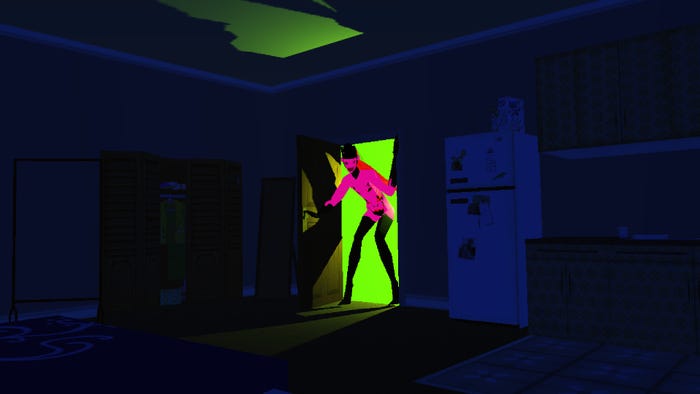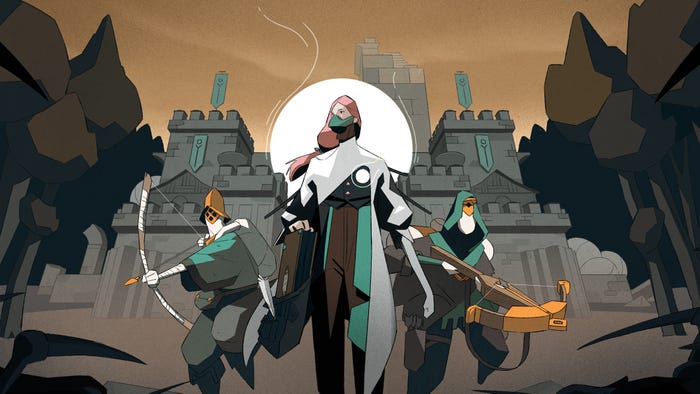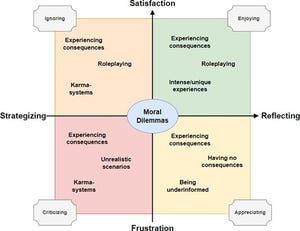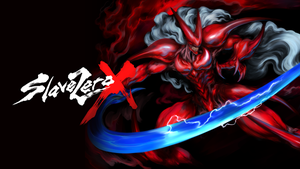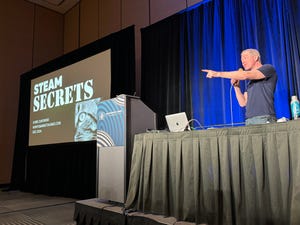
Featured Blog | This community-written post highlights the best of what the game industry has to offer. Read more like it on the Game Developer Blogs.
Positional Dungeon Crawling
What do Crypt of the Necrodancer, Binding of Isaac and Hoplite have in common? They're all successful dungeon crawlers where positioning matters.

It's occurred to me that all three dungeon crawler games I currently play have something in common: positioning matters a lot.
Hoplite is literally the only Android game I actually play. It's a simple but elegant hex-based dungeon crawl wherein you must traverse sixteen levels to reach the Fleece of Yendor. Each turn, you can move one tile in one direction or use your limited special actions to jump, bash with your shield, or throw your spear. Enemies are defeated by either moving straight towards them or starting and ending your move on an adjacent tile.
This means that good Hoplite play is all about reading the juxtaposition of your enemies and finding a path that lets you kill them without taking any damage. It gets particularly satisfying when you manage to kill multiple enemies at once.
The Binding of Isaac, both in its original and second version, is all about predicting the movement and attack patterns of your opponents. Some move in straight lines, or jump diagonally, or charge. Some fire shots in bursts or specific patterns.
It actually reminds me of chess a bit: hoppers' jumps are like knights', while the crosswise and diagonal attacks of clotties and clots requires you to superimpose the same pattern onto the screen as you would while evaluating an enemy rook or bishop.
And in Crypt of the Necrodancer, the positional aspect is both in the movement patterns of the enemy - skeletons move every second turn, so you have to make sure you are in the correct phase of the beat - and in the damage patterns of your weapons. In a traditional roguelike, swords and daggers and spears all operate at point-blank range and are differentiated by their damage and maybe certain bonuses. In Necrodancer, a basic sword, dagger and spear all do the same damage, but in a different pattern of tiles. This again makes positioning more interesting - in fact, I'd rather have a normal sword than a titanium (double-damage) dagger.
(As an aside, this held true in real life too - in medieval warfare, the main weapon was the spear and rather the pike. Daggers and even swords were secondary weapons you'd use if you had to. Our modern depiction of everyone using swords is like showing a modern war where everyone is using pistols instead of assault rifles.)
In comparison, other, "classic" dungeon crawlers like Nethack or Diablo make poor use of the fact that they happen in a 2D environment. There are some area of effect abilities, true, but nothing like the positional gameplay you get in the three games above. Positional gameplay is so fundamental to each of them that if you were to reduce them to a linear 1D environment, the gameplay would fold in on itself. They can get away with otherwise pretty simple rules because the 2D environment makes for so many different interesting game situations.
On the other hand, it's perfectly possible to make a one-dimensional dungeon crawler. Look at Darkest Dungeon, by all accounts a deep and engrossing game, whose combat situations are in a 1D environment. But to compensate, it has to have much more complex mechanics otherwise.
I don't think that positioning-based mechanics are easier to develop. They have more complex interactions. But they are easier to understand for the player, and players will have an easier time spotting interesting game moves thanks to all that brain circuitry devoted to visual processing.
In conclusion, I think that positioning-based gameplay in dungeon crawlers still has a lot of unexplored design space, be it through movement and attack patterns, or in other ways yet to be discovered.
David Stark makes games, currently Airships: Conquer the Skies, and thinks about them.
Read more about:
Featured BlogsAbout the Author(s)
You May Also Like





